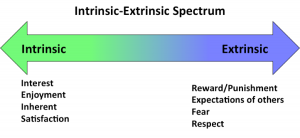
Part 1 of 2
By Andrew Telfer
International Educator for upcoming NSCA Certified Strength & Conditioning Specialist Course
Back when I was first starting off as a trainer I had a tendency to focus on the science of training at the cost of ignoring all those boring soft skills I memorized while earning my CPT and CSCS. What I mean is that I spent 99% of my time trying to determine the optimum intensity percentages and the perfect volume load to maximize adaptations while managing fatigue. My clients only did the exercises that I thought would give the biggest performance increases in the shortest amount of time. With a few key exceptions, my clients did get stronger and faster. Unfortunately, a lot of my clients also didn’t show up to all their sessions, many even began drop off after a few weeks or months.
I didn’t seem to have a problem retaining certain clients. Competitive male clients with no kids and healthy bodies were no problem. My problem came from older, less competitive clients. Many of my female clients also drifted away. After a while I realized that this trend was my fault. It’s not that certain clients were lazy, or poorly motivated. I was failing to understand their motivations, I never really figured out their “why”.
Motivation research has a long history in sports and conditioning. People much smart than I am figured this out back in the early days of competition. One of the leaders in the field, Edward Deci, has been writing about motivation since the 1970s. Along with his development of Self Determination Theory (SDT), Deci is the father of motivational analysis. Almost anything you read about motivation in modern self-help books or training manuals comes from Deci’s initial research.
Deci explains that people can have a wide variety of motivations for engaging in any activity. He writes, Although motivation is often treated as a singular construct, even superficial reflection suggests that people are moved to act by very different types of factors, with highly varied experiences and consequences. People can be motivated because they value an activity or because there is strong external coercion. (Ryan & Deci 2000)
My problem is that I assumed everybody just wanted to get stronger or faster but the reality is much more complex than that. Clients choose to work with a CSCS or CPT for specific reasons, if we don’t understand these reasons, we will fail our clients.
It’s easy to laugh at the old-school body builder who only runs high volume, machine-focused hypertrophy programs with all this clients. Obviously not everyone wants to be a body builder. But some people do, and we, as coaches need to respect that. Conversely, not every client cares about increasing their back squat 1RM by 5% because they think it will improve their performance. Maybe it’s equally unfair to expect our clients to only want to squat, deadlift and run sprints. Even if you think that’s what’s best for them, it may be ignoring their own motivations.
Deci categorized athletes as either extrinsically or intrinsically motivated. Extrinsically oriented athletes are motivated by external forces like payment, respect from others, or fear of punishment. On the other end of the spectrum, intrinsically motivated athletes participate in an activity because of motivators like interest, enjoyment or inherent satisfaction. Obviously everybody has a little bit of both in them. That’s why this is a spectrum and not a binary classification!
How does this help us coaches and trainers? Can we change our client motivations? Stay tuned for part 2!

Haff & Triplett, 2016. Essentials of Strength Training and Conditioning, Human Kinetics. Available at: http://linkinghub.elsevier.com/retrieve/pii/S0031940605661202.
Ryan, R. & Deci, E., 2000. Self-determination theory and the facilitation of intrinsic motivation. American Psychologist, 55(1), pp.68–78. Available at: http://doi.apa.org/getdoi.cfm?doi=10.1037/0003-066X.55.1.68.





